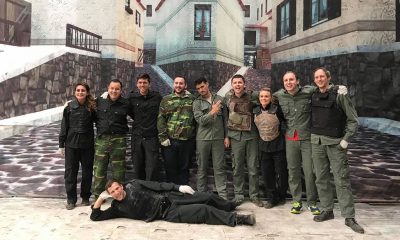Featured
Hanoi embraces pole dancing mania
Pole dancing is growing in Hanoi, allowing women (and men) to create a more positive body image
Published
6 years agoon
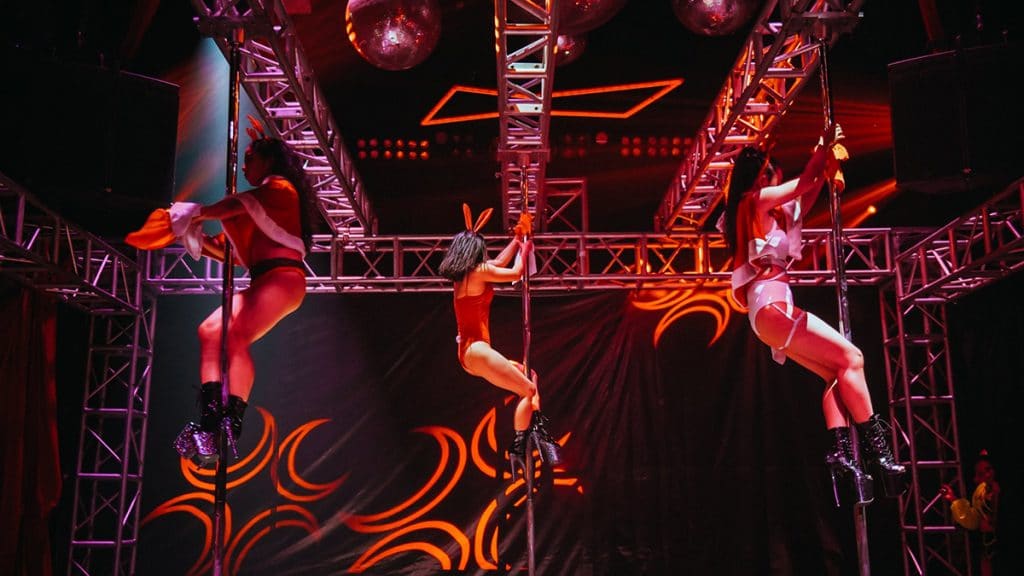
Hanoi Pole Mania’s Tay Ho studio is a bright oasis three floors above bustling Au Co. With two walls featuring floor to ceiling windows, and a third covered entirely in mirrors, the cozy studio feels spacious as sunlight streams into the room. A semi-circle of women wearing bikinis and close-fitting active-wear surround the five silver poles mounted to the floor. They watch, rapt, as pole instructor and studio owner Hai Linh Nguyen climbs onto a pole, using the tips of her toes to push it into a spin as she leaves the floor.

During class, Hai Linh moves about the studio with authority despite her petite build. On the pole, her every move appears effortless as she smoothly transitions from one trick to the next. She crisply dictates each movement to the students watching, calling out the trick’s name and pointing out important details to the class.

“It was really hard, but that’s what was exciting. I didn’t expect it to be that hard, and when I came back everything hurt. But that’s what I liked.”
Hai Linh, a Hanoi native, began studying pole dancing in 2012 while finishing her university degree in Belgium. Used to playing sports at a competitive level, she decided to try pole dancing to build muscle and because, as she says, “It was something completely different. Something I had never done before.”
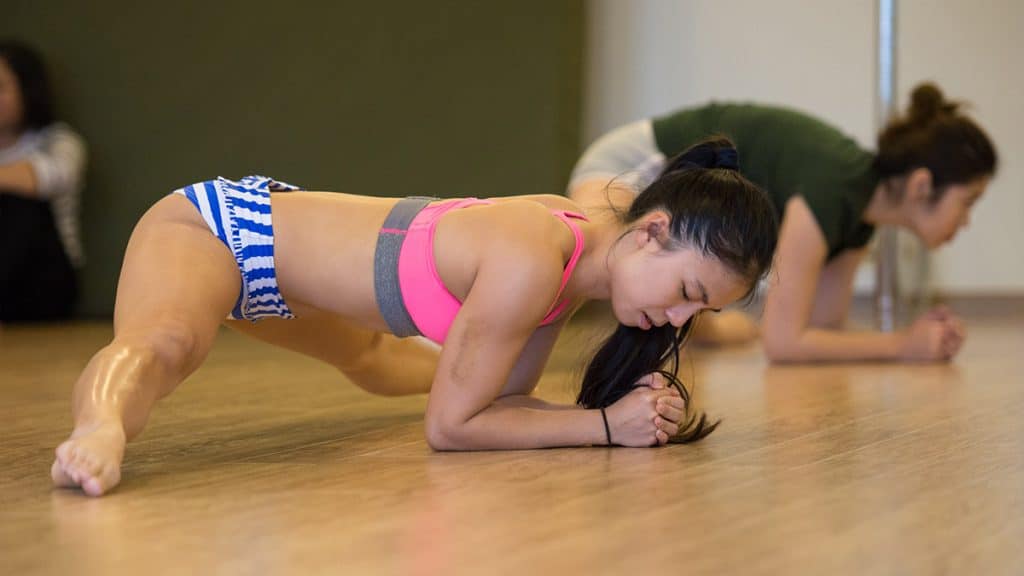
During her first class, Hai Linh took to the pole right away. Pole dancing is a deceptively difficult sport, requiring incredible strength to perform even the most basic of tricks. Hai Linh remembers, “It was really hard, but that’s what was exciting. I didn’t expect it to be that hard, and when I came back everything hurt. But that’s what I liked.”
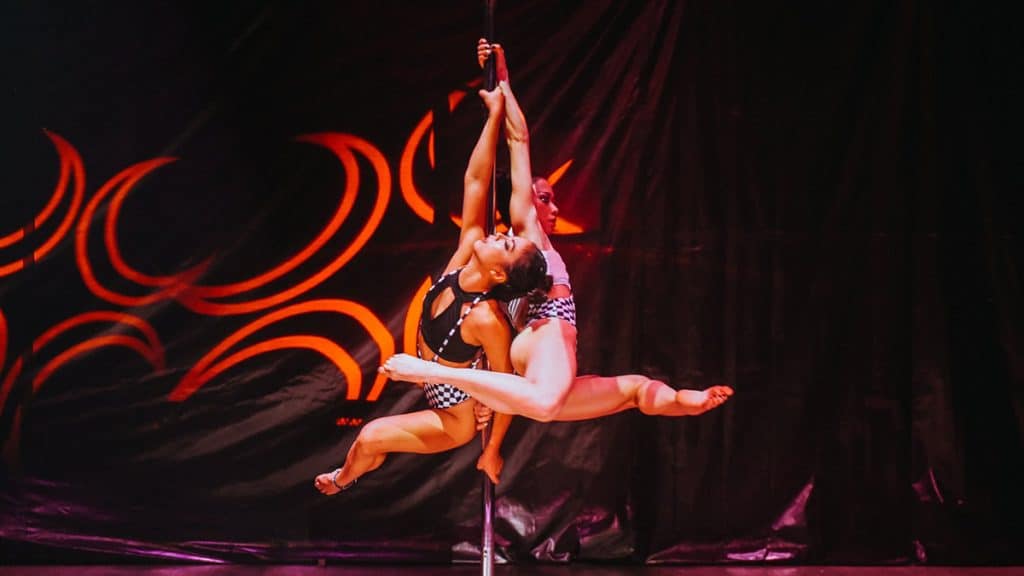
Hai Linh returned to Hanoi in 2015 to begin a job working with the Clinton Foundation. She laughs, remembering having a 40kg luggage allowance for the journey home, 20kg of which was taken up by her pole.
In Europe, people would ask her if she worked at a bar or if she danced topless, but here, she says, “I felt very comfortable. No one asked any weird questions.”
After setting up her own pole on her parents’ non-air conditioned rooftop and taking the few classes offered at the time by California Fitness, Hai Linh quickly realized she needed to find her own place to practice. That year, she opened Hanoi Pole Mania in its original location in Cau Giay. Although the studio was at first only meant for her, she already had a student join her on opening day.
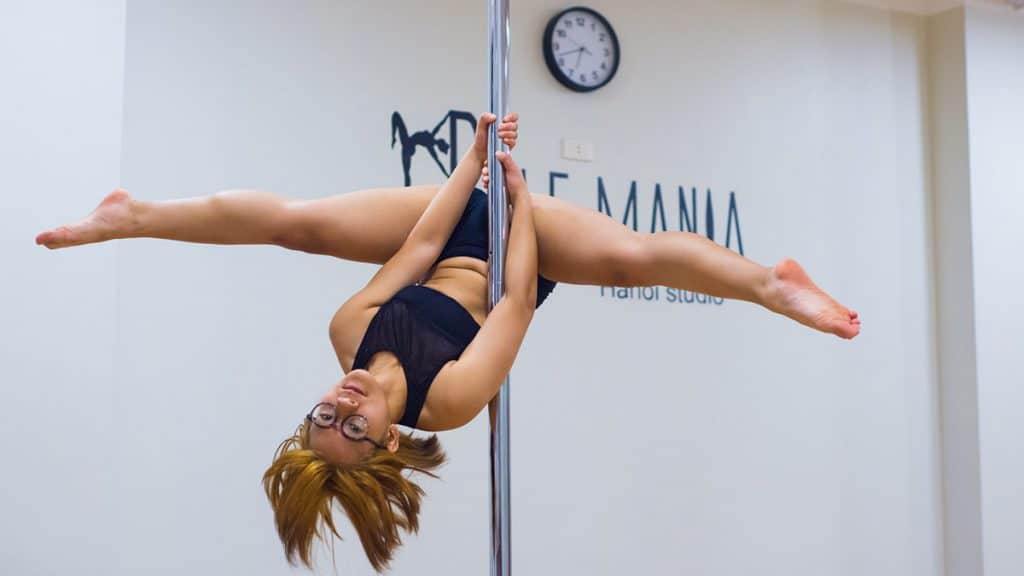
As the first, and still only, studio dedicated to pole dancing in Hanoi, it took a few months for people to gain interest. Pole dance is still very new to Vietnam. At the time, even glitzy Saigon only had three pole dance studios. To gain visibility, Hai Linh offered free trial classes, pushed PR and marketing, and reached out to the local dance and yoga communities. Within six months, all classes offered were reaching capacity.

At work in the Ministry of Health, her older, more traditional Vietnamese coworkers were very accepting of Hai Linh’s pole dancing, even proudly mentioning it when they introduced her to associates. “It is very surprising,” she says, “but pole dancing has always been very accepted in Hanoi, in comparison to in Europe.” She believes it is because pole has only recently been introduced in Vietnam, thanks to TV programs such as America’s Got Talent. “It was already the pole we know today, so they didn’t have in mind the old ideas about pole dancing. All the striptease, it didn’t happen on TV.” In Europe, people would ask her if she worked at a bar or if she danced topless, but here, she says, “I felt very comfortable. No one asked any weird questions.”
“Being half naked in front of people and looking at yourself in the mirror and loving what your body is able to do, I see that develop in students.”
The use of pole in sports can be traced back 800 years to India and China. In the United States, it first made an appearance in the late 19th century through traveling sideshow and burlesque performances. Since then, it has slowly developed into a more technical art, finally reaching the North American bar scene in the 1980s. Pole became a more widespread fitness activity in the 1990s, thanks to pole fitness videos and classes, which mirror the modern pole dancing we know today.

Now, people practice pole dance to build strength and become more flexible, as well as being a fun, challenging, and sexy activity. Hai Linh says she also sees personal and mental growth in her students as they learn commitment and how to be confident in their own body. “All those kinds of mental developments that people talk about in regards to female empowerment, it is so cliche but also so true. Being half naked in front of people and looking at yourself in the mirror and loving what your body is able to do, I see that develop in students.”
The majority of students at Hanoi Pole Mania are women, but a handful of men also attend classes regularly. “One of our values is equality,” Hai Linh says, “so we commit to welcoming everyone in the same way. Whether you are a man or woman, whatever your sexual orientation, no matter what your body looks like.” Women appreciate the sense of community they find in the studio. Through pole, women are given a space to celebrate each other’s strength.
“The image of a woman standing up and taking the pole is something very powerful.”
Still, Hai Linh wishes more men would be interested in giving pole a chance. “It’s a pity that men think this is a sport for women. I think it’s because men give up too fast. Men seem to have a lower pain tolerance than women, so after a couple of burns and bruises, they give up.”
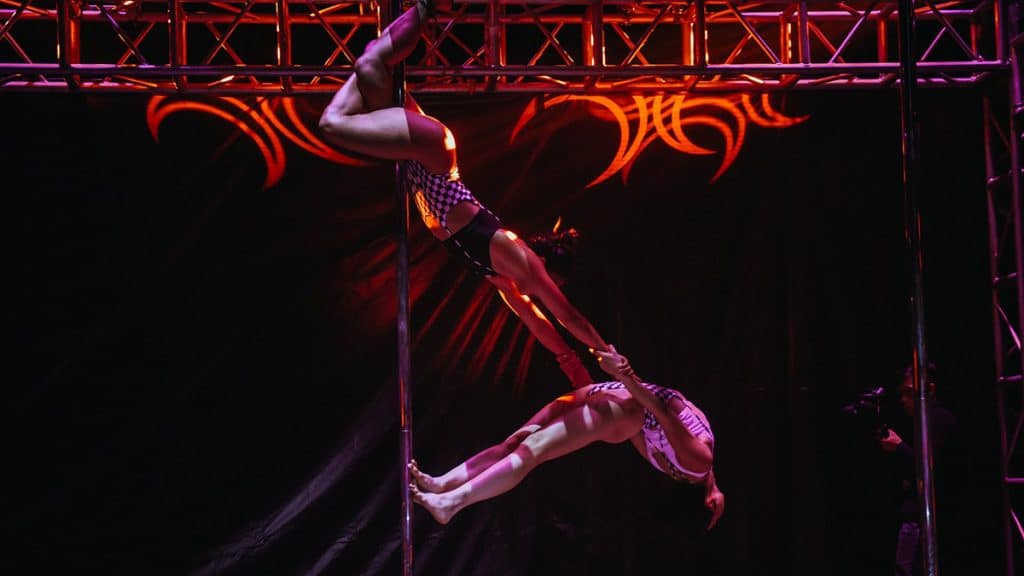
In the past, media companies have sent athletes, such as bodybuilders and physical education teachers, to try classes at the studio. But because pole dance requires the use of muscles not commonly used in other physical activities, and because they are not familiar with the pain that comes from bare contact with the pole, the athletes do not perform well.
Each year, Hanoi Pole Mania organizes a pole showcase featuring its students. Hai Linh says that despite the stress that goes into organizing the show, it is worth the effort. “When you see how people put in a lot of effort, a lot of motivation, work day and night, and invest so much, having this event keeps the community alive.” Students have jobs and families of their own, but still they make the time to train multiple times a week in preparation for the performance. “I think this is what we mean when we say girl empowerment,” she says. “When you do something that society does not expect you to do, you make it, and you make it great.”
She grabs the pole and her first graceful movements captivate the audience gathered around her.
Hanoi Pole Mania’s current studio opened in Tay Ho in 2017. It offers two to four classes daily, six days a week. After a six month overlap during which both the Tay Ho and Cau Giay studios were open, Hai Linh decided to close the Cau Giay studio when two instructors were no longer available to teach. “For many other people it would be a loss if they had to reduce the number of studios and classes. I don’t think it’s a problem,” Hai Linh says. “Our main goal is to build a strong pole community that can support strong, skilled pole dancers.” Since then, she has been approached by investors wishing to expand Hanoi Pole Mania, but until Hai Linh believes she has enough qualified instructors to cover more than one location, she does not feel comfortable opening another studio.

In 2018, an episode from the Netflix docu-series We Speak Dance featured Hai Linh, following her as she became the first woman to pole dance on the street in Vietnam. In the episode, Hai Linh climbs onto the pole while a group of onlookers watch her curiously. She grabs the pole and her first graceful movements captivate the audience gathered around her. “The image of a woman standing up and taking the pole is something very powerful,” Hai Linh says as the clip of her dancing continues. “For someone to stand up, take it, and dance in front of everyone with people judging you, people looking at you, it means that this person is very confident in herself. She’s assuming her inner image.”
Hanoi Pole Mania
225 Âu Cơ, Quảng An, Tây Hồ, Hà Nội
Open 24 hours
+84 335 495 081
hanoipolemania.com








